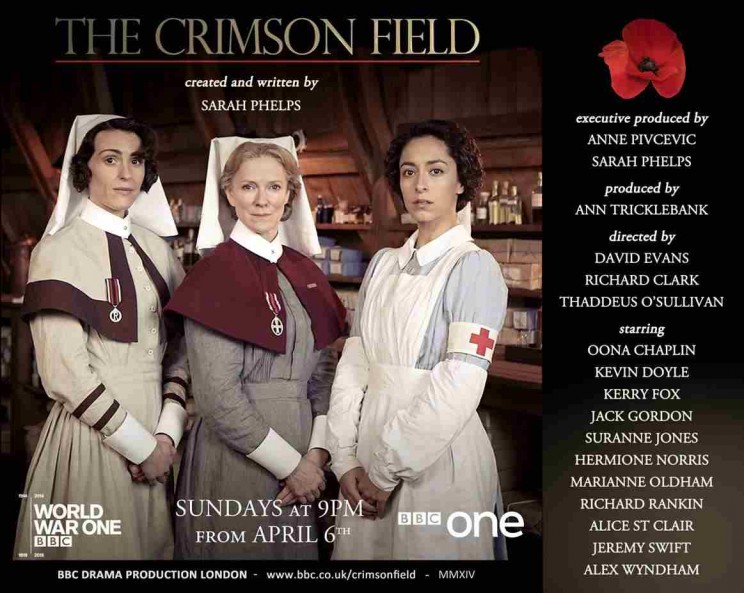The anniversaries of conflicts seem to be more likely to capture the public’s attention than any other significant commemorations. When I first began researching the nurses of the First World War in 2004, I was vaguely aware of an increase in media attention: now, ten years on, as my third book leaves the press, I find myself astonished by the level of interest in the subject. The Centenary of the First World War is becoming a significant cultural event. This time, though, much of the attention is focussed on the role of women, and, in particular, of nurses. The recent publication of several nurses’ diaries has increased the public’s fascination for the subject. A number of television programmes have already been aired. Most of these trace journeys of discovery by celebrity presenters, and are, therefore, somewhat quirky – if not rather random – in their content. The BBC’s project, World War One at Home, has aired numerous stories. I have been involved in some of these – as I have, also, in local projects, such as the impressive recreation of the ‘Stamford Military Hospital’ at Dunham Massey Hall, Cheshire. Many local radio stories have brought to light the work of individuals whose extraordinary experiences and contributions would otherwise have remained hidden – women such as Kate Luard, sister-in-charge of a casualty clearing station during the Battle of Passchendaele; Margaret Maule, who nursed German prisoners-of-war in Dartford; and Elsie Knocker, a fully-trained nurse who established an aid post on the Belgian front lines. One radio story is particularly poignant: that of Clementina Addison, a British nurse, who served with the French Flag Nursing Corps – a unit of fully trained professionals working in French military field hospitals. Clementina cared for hundreds of wounded French ‘poilus’, and died of an unnamed infectious disease as a direct result of her work.
The BBC drama, The Crimson Field was just one of a number of television programmes designed to capture the interest of viewers. I was one of the historical advisers to the series. I came ‘on board’ quite late in the process, and discovered just how difficult it is to transform real, historical events into engaging drama. Most of my work took place in the safety of my own office, where I commented on scripts. But I did spend one highly memorable – and pretty terrifying – week in a field in Wiltshire working with the team producing the first two episodes. Providing ‘authentic background detail’, while, at the same time, creating atmosphere and constructing characters who are both credible and interesting is fraught with difficulty for producers and directors. Since its release this spring, The Crimson Field has become quite controversial, because whilst many people appear to have loved it, others complained vociferously about its lack of authentic detail. Of course, it is hard to reconcile the realities of history with the demands of popular drama.
I give talks about the nurses of the First World War, and often people come up to me to ask about The Crimson Field. Surprisingly often, their one objection is to the fact that the hospital and the nurses were ‘just too clean’. This makes me smile. In these days of contract-cleaners and hospital-acquired infection, we have forgotten the meticulous attention to detail the nurses of the past gave to the cleanliness of their wards. The depiction of cleanliness in the drama was, in fact one of its authentic details.
One of the events I remember most clearly about my work on set with The Crimson Field is the remarkable commitment of director, David Evans, and leading actor, Hermione Norris, in recreating a scene in which Matron Grace Carter enters a ward which is in chaos because a patient has become psychotic and is attacking a padre. The matron takes a sedative injection from a nurse, checks the medication and administers the drug with impeccable professionalism – and this all happens in the space of about three minutes. I remember the intensity of the discussions about how this scene would work, and how many times it was ‘shot’ on the day of filming. But I also remember with some chagrin how, the night after filming, I realised that the injection technique had not been performed entirely correctly. I had to tell David Evans that I had watched the whole sequence six times without noticing that a mistake had been made. Some historical adviser! The entire scene had to be re-filmed. The end result, though, is an impressive piece of hospital drama. Norris looks as though she has been giving intramuscular injections all her life. I shall never forget the professionalism of the director and actors on that set – nor their patience with the absent-minded-professor who was their adviser for the week.
In a centenary year, it can be difficult to distinguish between myths and realities. We all want to know the ‘facts’ or the ‘truths’ about the First World War, but we also want to hear good stories – and it is all the better if those elide facts and enhance the drama of events – because, as human beings, we want to be entertained as well. The important thing, for me, is to fully realise what it is we are commemorating: the significance of the contributions and the enormity of the sacrifices made by our ancestors. Being honest to their memories is the only thing that really matters –the thing that makes all centenary commemoration projects worthwhile.
Image credit: Ministry of Information First World War Collection, from Imperial War Museum Archive. IWM Non Commercial Licence via Wikimedia Commons.
The post The real story of allied nursing during the First World War appeared first on OUPblog.



